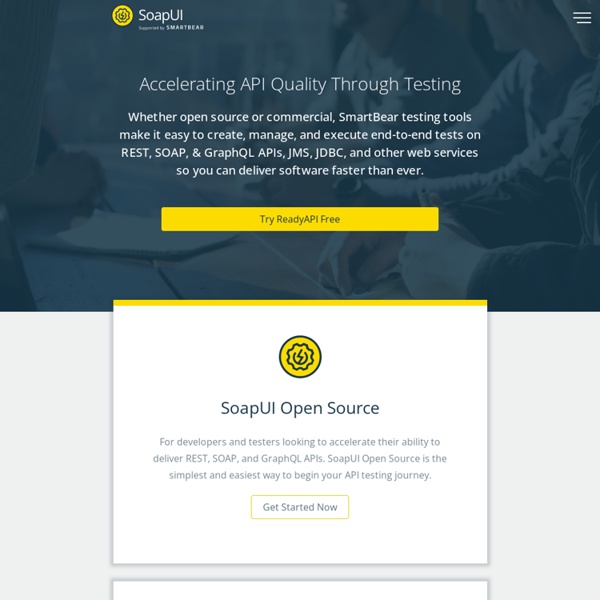



Community Network Zeal - offline API documentation browser Agile Project Management: Can This Methodology Improve Your Processes? | semreportcard Is Agile just another project management fad? Or can it actually enhance how you work or handle a process? Big companies use the Agile methodology to run “fast and efficient projects.” A quick look at this novel approach to project management revealed that Agile, indeed, offers big help—not hype. Defining the Agile Methodology Individuals and organizations may adopt slightly different flavors of the Agile method. Agility, to begin with, is the enemy of rigidity. In an agile workplace, everyone is responsible for the success of a project. Agile methods are mainly drawn from real-life experiences of software professionals who encountered limitations and problems commonly associated with traditional methods. Benefiting from the Agile Approach Agile, without a doubt, is a lightweight project management framework that promotes flexibility and independence. Here’s why. Agile Makes Decision-Making Easier and Faster Making timely decisions is a good start. Agile Brings Quick ROI
SOA Principles Listen to the podcasts that accompany this site: Part I - Part II The key to getting the most out of SOA lies within the knowledge of how to create "truly" service-oriented solution logic. That knowledge has been documented as part of the service-orientation design paradigm. As with object-orientation, service-orientation represents a distinct approach to designing solution logic in support of a very specific set of goals. This site introduces the design principles that comprise the service-orientation design paradigm and further explores various aspects and effects of applying service-orientation in the real world. Furthermore, this comprehension provides you with a great deal of clarity when surveying the current SOA marketplace. The criteria for this type of assessment no longer is whether something claims to provide SOA support, but whether its actual features will help you realize the desired level of service-orientation within your solution designs.
Apache JMeter Multilevel Categorization CRM Case Management supports the multilevel categorization function, allowing you to assign a CRM case to a category of a multilevel categorization schema. In the context of CRM Case Management such a category is called a “reference category”. For general information about multilevel categorization, see Multilevel Categorization. Integration Multilevel categorization in CRM Case Management uses the Multilevel Categorization application. If during case processing you want to use activity templates assigned to a reference category, you need to define activity templates in CRM Activity Management. Activities Setting up multilevel categorization for CRM Case Management entails the following: Was this page helpful to you? Do you have any additional feedback? The following content is not part of SAP product documentation. Experts can share their tips in the "Discuss this page" section below.
Agile Alliance :: Home Making Sense of all these Crazy Web Service Standards It has been eight years now since SOAP and WSDL (Web Service Description Language) were introduced as standards to facilitate communication and data exchange between heterogeneous systems. Since then, a flurry of protocols, collectively named WS*, have also been introduced as extensions to SOAP (and in some cases WSDL) to facilitate specific communication requirements and scenarios. The categories of WS* are broad, and it has reached a point where the sheer number of standards is so great that despite a core set being implemented in many platforms, many in the web service community are confused about which standards they should care about, when and why. Furthermore, concerns over interoperability prevail, as each standard traverses its lifecycle of development, early adoption, ratification and update. Revisiting SOAP+WSDL It turns out that WSDL (Web Services Description Language) combined with SOAP is what really improved developer productivity for developing systems that share data.
CLIF How CRM Works Scrum (méthode) Pour les articles homonymes, voir Scrum. Scrum est un schéma d’organisation de développement de produits complexes. Il est défini par ses créateurs comme un « cadre de travail holistique itératif qui se concentre sur les buts communs en livrant de manière productive et créative des produits de la plus grande valeur possible ». Scrum est considéré comme un groupe de pratiques répondant pour la plupart aux préconisations du Manifeste Agile. L'infrastructure de développement s'appuie sur le découpage d'un projet en boîtes de temps, nommées « sprints ». La création de frameworks de développement logiciel hybrides couplant Scrum et d'autres frameworks est commune puisque Scrum ne couvre pas le cycle de développement de produit. La métaphore du scrum (mêlée du rugby) apparaît pour la première fois en 1986 dans une publication de Hirotaka Takeuchi et Ikujiro Nonaka intitulée The New New Product Development Game[1] qui s'appliquait à l'époque au monde industriel. Parmi ses attributions : sprint :